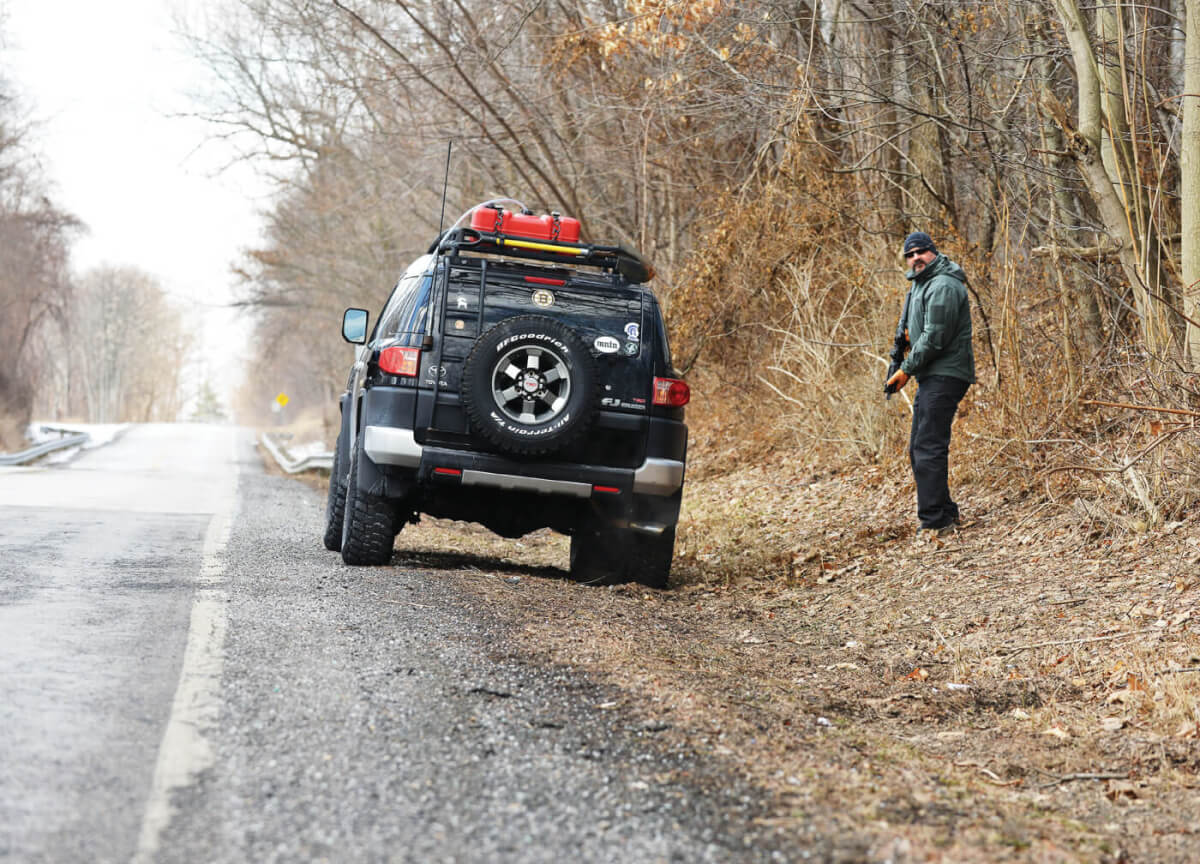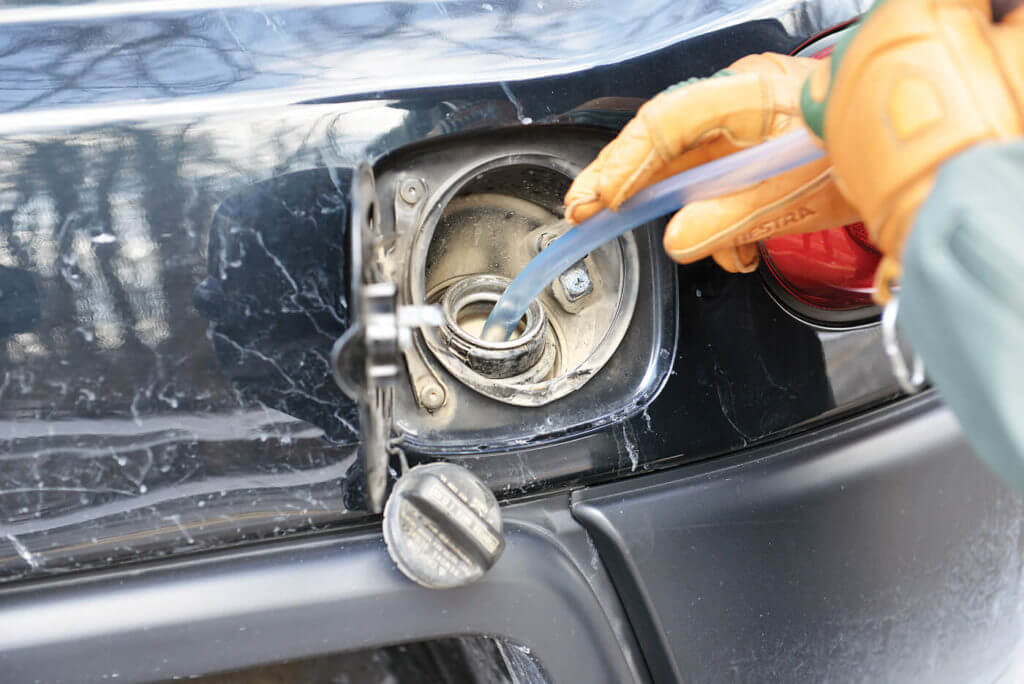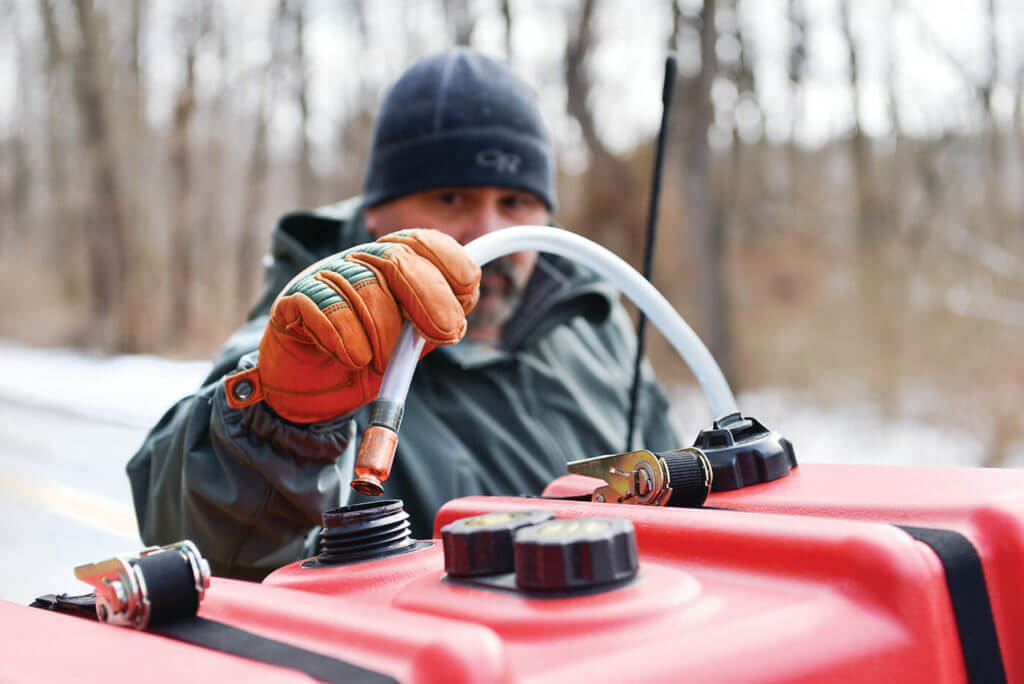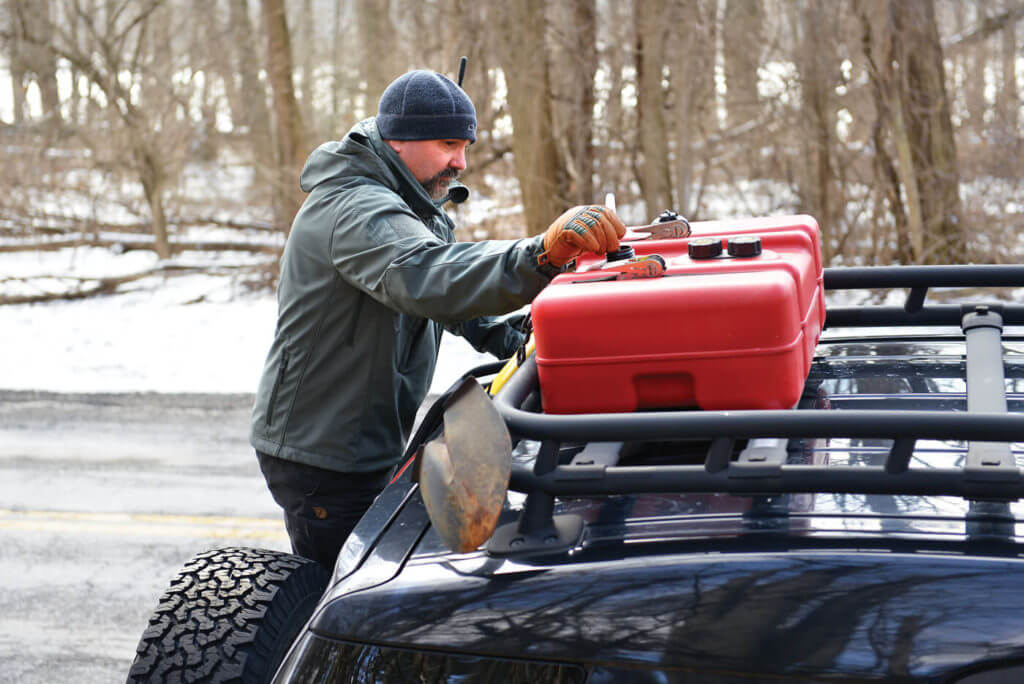You are aware of the signs: civil unrest is brewing. Your gear is ready, your supplies are prepped and you’ve practiced your bug-out plan. You are good to go.
Regardless of where you are bugging out to, if you have to travel a great distance, you’ll need to refuel your bug-out vehicle (BOV). Read on to find out how to do that with the utmost security in mind.
SAFETY FIRST
As preppers, survivalists, or simply individuals who deem it necessary to be “ready just in case,” you have made the conscious decision to be prepared for something going wrong in society. That said, I assume you’re already a security-minded person. My personal security practices aren’t just for “special occasions,” they are part of my everyday life. For example, I have a concealed carry permit and carry my pistol … always.
Similarly, my situational awareness is always on high alert.

When I fill my vehicle up on normal occasions, day or night, I keep a watchful eye out. I pick a spot around my vehicle from which I can see as much of my surroundings as possible and I move around. I do not text or talk on the phone while I wait for my vehicle to fill. I actually pay attention to what is taking place around me.
WORDS OF ADVICE
During a bug-out, security is paramount. Hands-free refueling is the best practice so you can focus on awareness and not be distracted.
Obviously, the first thing you need is fuel cans. I use an external 12-gallon, Moeller marine fuel tank I have modified so I can carry it on the rack of my vehicle. It is extremely rugged, has the ability to expel gasses so it will not bulge in the heat and also has strap grooves to make securing it with ratchet straps quick and easy. I prefer to transport my fuel on the outside because I do not like the smell of fuel in my vehicle. I need the space for other equipment and supplies.
Some folks are concerned about the security of their fuel when it is on the outside of the vehicle. Quite honestly, that is not a big concern for me. If someone has the ability to get on my truck and the time to take the tank or empty its contents, then something went terribly wrong for me.
You are also going to need a self-priming syphon; luckily, many inexpensive options exist.
Finally, you are going to need to pick a location for the refueling. Depending on the situation and the environment, look for a spot that will afford you the best area of observation while providing some physical security attributes. A location that will give you the ability to see danger from a distance is best, but not always available. I am not a big advocate of going off the beaten path to refuel. I know from practice that it takes me about seven to nine minutes from stopping my vehicle to getting back on the road to unload the 12-gallon tank. The majority of those minutes are devoted to paying attention to my surroundings, not dealing with the refueling.
URGENCY COUNTS
Once you establish a good location for the refueling, act with some urgency. Remember, in your bug-out with a vehicle, speed is your security. The quicker you are back on the road and moving the better. I set my vehicle up a certain way so I know where things are. This is vitally important, as you do not want to be searching for the syphon in the dark when you should be paying attention to whom may be approaching. Know where your equipment is and practice getting to and using it. Depending on the environment and the situation, you need to make a tactical decision whether to keep the vehicle running or shut it down during the refuel. Both have advantages and disadvantages, so the decision needs to be yours.
THE STEPS
From this point, the steps are quite simple: place the hose end (without the primer valve) into the fuel tank opening of your vehicle at least four inches in so it does not slip out. Next, place the syphon with the self-priming end in the extra tank or can until it hits the bottom. Remember, the container you are refueling from needs to be at a higher level than the fuel tank opening of your vehicle.
Now set the primer by simply shaking the ball valve end a few times until the fuel starts moving. Take up a position from which you have visibility of anyone approaching. Once refueling is complete, remove the end from the external tank first and allow any remaining fuel in the line to empty into your vehicle’s tank. Replace the filler caps on your vehicle and extra tank or cans, stow the syphon and get back on the road.
EASY AS 1, 2, 3, 4
- Put the hose end (without the primer valve) into the fuel tank opening of your vehicle at least 4 inches.
- Place the syphon with the self-priming end in the extra tank or can until it hits the bottom.
- Set the primer by shaking the ball valve end a few times until the fuel starts moving.
- Remove the end from the external tank first and allow any remaining fuel in the line to empty into your vehicle’s tank. Replace the filler caps on your vehicle and extra tank/cans and stow the syphon.
PRACTICE MAKES PERFECT
If you practice and have a consistent method for the way you perform tasks, you can become quite efficient. The key is consistently practicing these steps the same way every time. For example, place the caps to the refueling tank in the same location, and insert the syphon the same way. It is just like a draw stroke for your pistol. If you are continuously changing the location of your pistol and have a plethora of techniques to get it into action, you will not be as efficient when you need to do it quickly or when under stress as if you trained with it consistently in one location.
• A safe alternative to transferring dangerous fuels by usual means.
• Eliminates the risk of drawing hazardous or nasty fluids into your mouth when getting the siphon process started.
• Solves many draining problems.
• Lack of complex, moving parts; relies on gravity.
• Simply jiggling gets things going.
About the author: George Singarella is the president and founder of LANISTA International LLC, a training entity that specializes in combative disciplines. He is a former combat-decorated U.S. Marine, who in the mid ‘90s began his career in the high-risk environment security industry. He is the former director of training and protective operations of The Crucible training facility.
Editor’s note: A version of this article first appeared in the August 2014 print issue of American Survival Guide.





